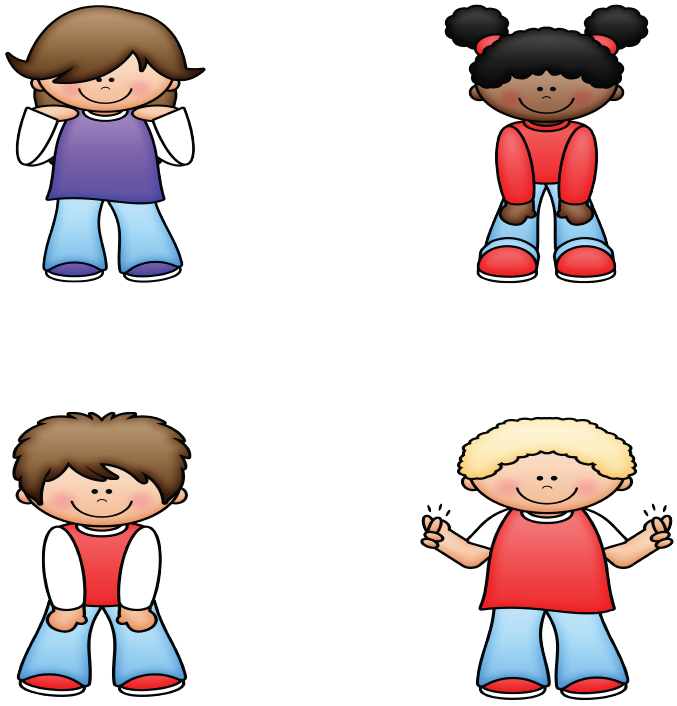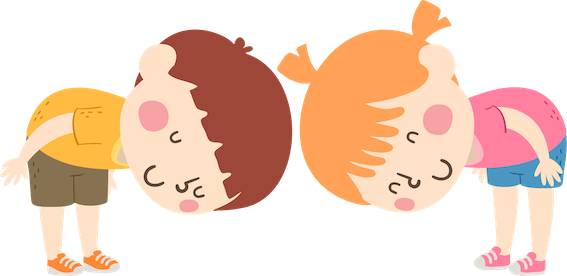Y2. Lesson 27. Call & response
Prior learning: None.
Duration: 30 minutes
Materials: Woodblocks or claves
Keywords: Beat, rhythm, singing, chanting, partners, rhymes, circle games.
Difficulty: ![]()
Prepare
Present
Call and response
Practise
Students listen to Rondo alla Turca by Mozart.
 Melodic development
Melodic development
![]() Students discover a call and response song from Ghana.
Students discover a call and response song from Ghana.
- This is an excellent call-and-response song from Ghana. The song has simple, repetitive lyrics and is often accompanied by clapping and various movements that add to the fun and help children with coordination. It's not only a song but also a game that involves following the leader's actions.
- Divide the class into two groups. One will be the group that calls, and the other will respond.
- If students are not familiar with the song, then teach it line by line in a measured cadence.
- When students are secure, lead the first group by singing the first phrase and then indicating the second group to respond.
- The lyrics have been written as pronounced in English, and many variations are often used.
- On the last "Hey", both groups shout and raise their arms high.
- The beauty of "Che Che Kule" is that it can be modified to suit different ages and abilities. The song promotes cultural awareness and encourages children to participate in a group activity where they have to listen carefully and follow instructions. It's a playful, engaging way to learn about rhythm, coordination, and other cultures through music and movement.
 Rhythmic development
Rhythmic development
![]() Students respond to a rhythmic call from the 'leader'.
Students respond to a rhythmic call from the 'leader'.

- A student is chosen as the leader, who starts with a very basic rhythm, something as simple as "clap, clap, pause, clap." After performing this rhythm, the class repeats it back.
- After the class successfully repeats the rhythm, the leader immediately taps out a new rhythm. This keeps the game moving and holds the student's attention.
- As students become comfortable with the game, the leader can vary the rhythms in complexity, speed, and length. The leader might start to mix different sounds, like clapping and snapping, or tapping on different surfaces for varied auditory feedback.
- Over time, rhythms can include rests (silences), accents (louder taps), and different tempos (speeds). As the students advance, they can try to repeat rhythms that are longer and have more complicated patterns.
- Allow students to take turns being the leader. This encourages them to listen to each other and gives each child a sense of responsibility and leadership.
- Introduce body percussion such as stomping, patting knees, or clicking tongues. You can also use this opportunity to teach about different percussion instruments if they are available.
 Creative movement
Creative movement
![]() Students sing and clap to the beat in this seated circle game.
Students sing and clap to the beat in this seated circle game.
- Students are seated in a circle.
- One student is chosen to patrol outside the circle and begins by singing the first phrase, using their name instead of 'Charlie'.
- The students in the circle repeat the phrase and clap to the beat.
- The named student continues with the following phrase whilst still patrolling, and the circle students repeat the phrase.
- The game continues until the final phrase when the named student taps the nearest seated student, who will then chase them.
- Once the named student sits in the circle, the process begins again with the new student.
 Listening
Listening
![]() Students listen to a famous piece of music by Mozart.
Students listen to a famous piece of music by Mozart.
- You might explain this music before you play it.
- "Rondo alla Turca" is like a musical game where a catchy main tune (the "A section") keeps leaving and returning.
- Composed by Mozart, it's the lively part of a larger piano piece. Between the main tune's appearances, different melodies (the "B" and "C" sections) pop up, telling their own stories before the main tune comes back, like a chorus in a song.
- Ask students which instrument is being played.
- Ask how the music made them feel. What did they wonder?
 Visual learning
Visual learning
![]() Students must name the instruments shown on the board.
Students must name the instruments shown on the board.
- Project the graphic on the board.
- Divide the class into the girls and the boys.
- Explain that for every correct answer, a team will be awarded one point.
- Point to the image of an instrument and ask the girls for its name.
- If a correct answer is received, then award a point.
- Repeat with the boys as you move to the following instrument.
- The team with the most points wins.
 Instruments
Instruments
![]() Students discover how to play Bow To Your Partner using tuned percussion.
Students discover how to play Bow To Your Partner using tuned percussion.
- Distribute tuned percussion instruments. In this exercise, xylophones and glockenspiels are chosen.
- Divide the class into two groups.
- Demonstrate the melody of the song to the first group.
- When secure, demonstrate the simple accompaniment to the second group.
- Conduct the two groups and monitor the class performance, offering gentle guidance where appropriate.

 Part work
Part work
![]() Students clap back a rhythmic canon after two beats.
Students clap back a rhythmic canon after two beats.
- Clap a simple rhythm to the class and ask them to repeat until secure.
- Some examples are shown on the left.
- Ask students to clap this rhythm back after two beats.
- Repeat with another rhythm, and the class repeats after two beats.
- Choose a student to come forward and clap a simple rhythm, the class repeating back after two beats.
 Assess
Assess
Suggested lessons
Y1. Beat II

Y1. Beat III

Y1. Beat IV

